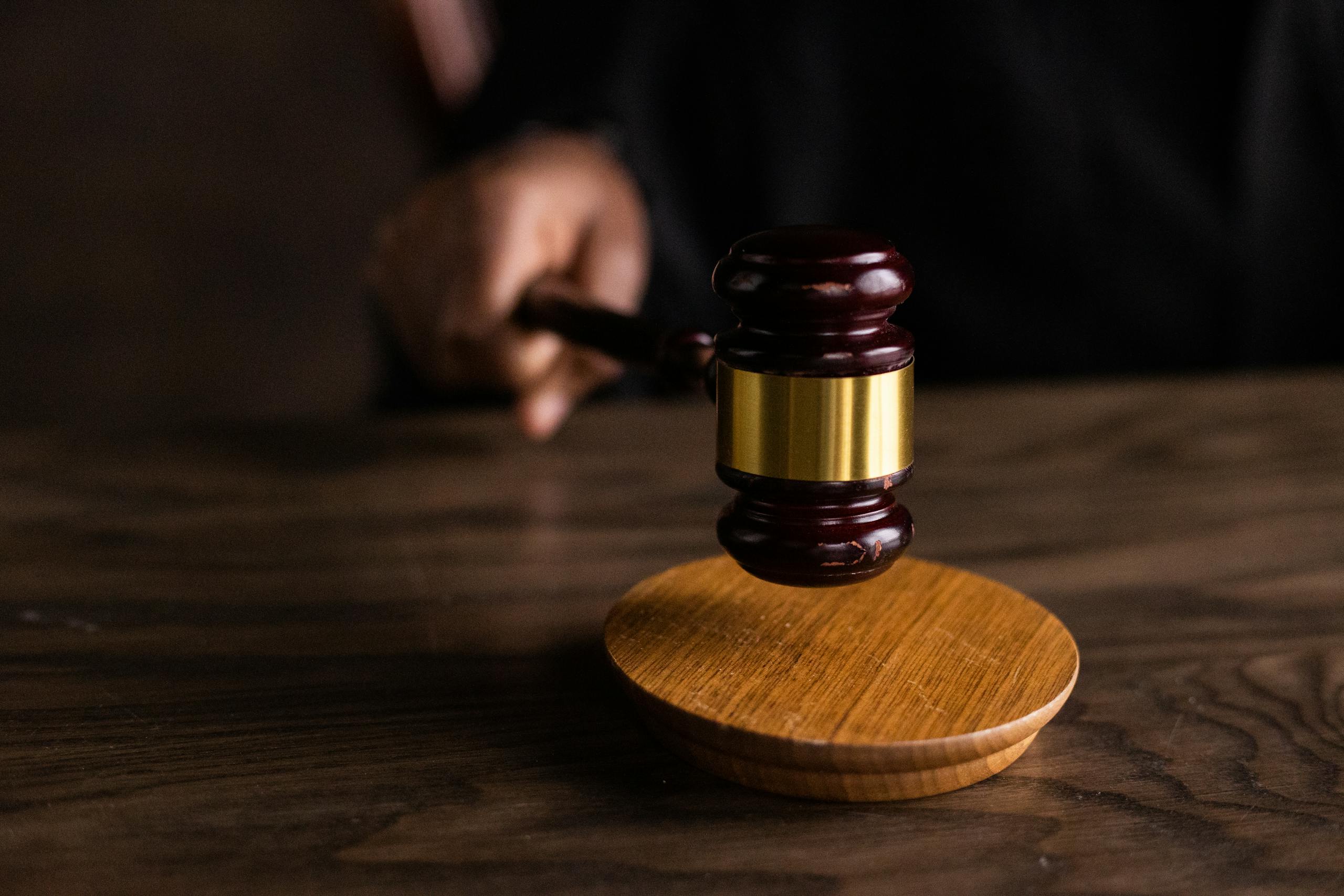Restraining Order Court Date: Preparation and Success Guide
Learn how to prepare for and win your restraining order hearing. Discover crucial evidence requirements, expert testimony tips, and proven strategies for success. Updated for 2025 with real case examples.
Introduction
Your court date is approaching. Maybe you’ve been counting down the days, preparing your evidence, rehearsing your story. Or maybe you’ve been avoiding thinking about it entirely. Either way, the outcome of this hearing will impact every aspect of your life – from where you can live to when you can see your children. The good news… you’re about to learn exactly how to prepare for success and win.
Success Statistics Box (2023-2024)
📊 Hearing Outcomes
- 78% of contested orders depend on evidence quality
- 92% of respondent no-shows result in permanent orders
- 65% of well-prepared respondents get orders modified
- 83% of cases without proper evidence fail
- 71% of successful defenses involve documented timelines
⚖️ Critical Factors
- 89% of successful cases have organized evidence
- 76% of failures involve emotional testimony
- 94% of wins include third-party witnesses
- 82% of modifications require documented change
- 68% of cases are won on credibility alone
⏰ Timeline Impact
- Average hearing length: 15-45 minutes
- Preparation time needed: 20-30 hours
- Evidence gathering window: 2-3 weeks
- Witness preparation time: 3-5 hours
- Document organization time: 8-10 hours
What to Expect at Your Hearing: The Inside Scoop
The courtroom isn’t like what you see on TV. Understanding exactly what happens removes the mystery and lets you focus on what matters – presenting your case effectively.
Timeline Breakdown
Before You Enter:
- Security screening (30-45 minutes)
- Check-in with clerk (15-20 minutes)
- Last-minute attorney consultation
- Paperwork verification
- Seating arrangements
During The Hearing:
- Judge’s introduction (2-3 minutes)
- Petitioner’s case (10-15 minutes)
- Your response (10-15 minutes)
- Judge’s questions (5-10 minutes)
- Final decision (5 minutes)
The Key Players in the Courtroom
The Judge:
- Makes final decisions
- Controls proceedings
- Asks direct questions
- Evaluates credibility
- Issues court orders
The Clerks:
- Handle paperwork
- Manage exhibits
- Track time limits
- Record proceedings
- Process orders
The Petitioner:
- Presents their case first
- Must prove allegations
- Can call witnesses
- Presents evidence
- Answers questions
The Respondent (You):
- Responds to allegations
- Presents defense evidence
- Calls defense witnesses
- Answers judge’s questions
- States requested outcome
Your Rights During the Hearing
You Have the Right to:
- Present evidence
- Call witnesses
- Cross-examine witnesses
- Request continuances
- Appeal decisions
- Have an attorney present
- Present your case fully
- Request interpreters
Procedural Expectations:
- Entry and Seating
- Separate waiting areas
- No contact with the petitioner
- Specific seating arrangements
- Security Protocols
- Speaking Order
- Judge speaks first
- Petitioner presents
- You respond
- Rebuttals if allowed
- Final statements
- Evidence Presentation
- Follow local rules
- Proper submission format
- Copies for all parties
- Exhibit marking system
- Document authentication
Below would be a clear, simple courtroom layout diagram specifically for restraining order hearings.
Key Elements to Note:
- Required Distance between petitioner and respondent tables (typically 15-20 feet)
- Clear Sight Lines for the bailiff to monitor both parties
- Separate Entrances/Exits are often used for parties
- Public Gallery where witnesses wait
- Strategic Positioning of clerk near judge for document handling
Important Protocol Notes:
- Never approach the judge’s bench without permission
- Stand when addressing the court
- Speak only when recognized by the judge
- Maintain distance from the petitioner at all times
- Use clerk for document transfers
Preparation Checklist: Your Roadmap to Success
Documentation Organization (To be done 2-3 Weeks Before)
Legal Documents
- Original restraining order
- All service papers
- Court notices/summons
- Prior court orders
- Police reports
- Previous case documents
Evidence Binder Creation
- Tab-divided sections
- Chronological order
- Multiple copies (court requires 3)
- Electronic backups
- Evidence list/index
Personal Records
- Communication records
- Financial documents
- Medical records
- Employment records
- Character references
- Professional licenses
Witness Preparation (1-2 Weeks Before)
Professional Witnesses
- Police officers involved
- Healthcare providers
- Counselors/therapists
- Employment supervisors
- Professional evaluators
Character Witnesses
- Family members
- Neighbors
- Co-workers
- Religious leaders
- Community members
Witness Preparation Checklist:
- Review testimony points
- Practice question responses
- Discuss court etiquette
- Schedule appearance times
- Prepare contact backup plans
Timeline Creation (1 Week Before)
Must Include:
- Key dates and events
- Supporting evidence for each entry
- Witness corroboration
- Document references
- Location details
Courtroom Preparation (Days Before)
Personal Presentation
- Professional attire selected
- Documents organized
- Early arrival planned
- Support person arranged
- Transportation confirmed
Practice Sessions
- Opening statement
- Evidence presentation
- Witness questioning
- Judge responses
- Closing remarks
Day-Before Checklist
Final Preparations:
- Review all documents
- Confirm witness attendance
- Prepare exhibit copies
- Charge electronic devices
- Plan arrival route
- Review security requirements
I’ll outline some essential document templates that are crucial for restraining order hearings.
Essential Court Hearing Document Templates
1. Witness Information Sheet
WITNESS CONTACT & TESTIMONY SHEET
Name: ___________
Relation to Case: _
Contact Info: ____
Key Points of Testimony:
- ____________
- ____________
- ____________
Available Dates: _
Transportation Needs:
Special Requirements:
2. Communication Log
COMMUNICATION RECORD
Date: ___
Time: ___
Type: ___
From: ___
To: _____
Content: _
Witnesses:
Evidence Ref #: _
3. Expense Tracking Sheet
| Date | Expense Type | Amount | Receipt # | Purpose |
| MM/DD/YY | Legal Fees | $XXX | 001 | Initial Consultation |
| MM/DD/YY | Documents | $XXX | 002 | Court Copies |
| MM/DD/YY | Travel | $XXX | 003 | Court Appearance |
Evidence Requirements: Building Your Case
The success of your hearing often hinges not just on what evidence you have, but how you present it. Think of your evidence as telling a story – each piece should connect to create a clear, compelling narrative that supports your position.
Documentation Needed
The foundation of your case rests on solid documentation. Beyond just collecting papers, you need to create a clear paper trail that anyone can follow. Start with all official documents related to the order itself, but don’t stop there. Every email, text message, financial record, and photograph needs to be authenticated and organized chronologically.
Remember that the judge sees dozens of cases each day. Your evidence needs to be compelling, clear, and most importantly, relevant. A common mistake is overwhelming the court with unnecessary documents. Quality trumps quantity every time. One clear, well-documented incident carries more weight than a hundred vague references.
Witness Preparation
Witnesses can make or break your case, but only if they’re properly prepared. The best witness testimony comes from individuals who can speak directly to relevant events, not just character references. Each witness needs to understand not just what they’ll say, but why their testimony matters to your case.
Meet with each witness individually. Walk them through their testimony. Help them understand what questions they might face from both sides. Most importantly, they should stick to facts rather than opinions or emotional statements. A witness who loses composure or becomes argumentative can damage your case more than help it.
Timeline Creation
Creating a compelling timeline is an art form. Start by mapping out every significant event, then build your supporting evidence around these key moments. Your timeline should tell a story that anyone can follow, even someone with no knowledge of your case.
Include not just the major incidents, but also the context around them. For example, don’t just note when a confrontation occurred – include what led up to it and what followed. This context helps the judge understand the full picture, not just isolated moments.
Exhibit Organization
Think of your exhibits like chapters in a book – they need to flow logically and tell a cohesive story. Create a master index that clearly shows what each exhibit proves. Every piece of evidence should have a purpose and support your main arguments.
Consider creating demonstrative exhibits – charts, graphs, or diagrams that help visualize complex information. These can be particularly effective when dealing with multiple incidents over time or complicated financial matters. Just ensure any visual aids are professional and easy to understand at a glance.
Remember, the goal isn’t to overwhelm the court with information but to present a clear, compelling case that supports your position. Quality, relevance, and organization matter more than the sheer volume of evidence.
Common Hearing Scenarios: What to Expect and How to Handle It
Every restraining order hearing is unique, yet certain scenarios play out regularly in courtrooms across the country. Understanding these common situations helps you prepare for whatever might unfold in your case. Let’s explore the most frequent scenarios and how to handle them effectively.
When Respondents Don’t Show Up
The courtroom falls silent as the judge calls the case, but the respondent is nowhere to be found. This happens more often than you might think, and the consequences are severe and immediate. Without a respondent present, judges typically grant permanent orders within minutes. The absent party’s side of the story remains untold, their rights undefended, and their future severely impacted.
If you’re the petitioner, don’t assume a no-show guarantees victory. You still need to prove your case. Come prepared with evidence and witnesses, even if you suspect the other party won’t appear. Judges appreciate thoroughness and your documentation matters for future enforcement.
Ex Parte Hearings: The Emergency Rush
Ex-parte hearings occur when immediate protection is sought without notifying the other party. These emergency hearings move fast – often lasting just minutes. The judge makes quick decisions based on limited information, focusing on immediate safety concerns rather than long-term solutions.
During these hearings, the petitioner must demonstrate an immediate danger that justifies bypassing normal notice requirements. The burden of proof is high, but the threshold for granting temporary orders is relatively low when safety concerns are credible.
Contested Hearings: The Full Battle
Contested hearings represent the full courtroom experience most people expect. Both parties are present, evidence ready, witnesses waiting. These hearings require the most preparation but offer the best opportunity for both sides to be heard.
The typical flow follows a set pattern: the petitioner presents first, the respondent follows, each side questions witnesses, and the judge may interject with questions throughout. Success hinges on preparation, professionalism, and the ability to stay calm under pressure.
Continuance Requests: The Waiting Game
Sometimes, one or both parties request more time. Maybe key evidence isn’t ready, an essential witness is unavailable, or legal representation was just retained. Judges handle these requests based on the specific circumstances and the history of the case.
Remember that temporary orders typically remain in effect during continuances. This means restrictions continue, making timing a crucial strategic consideration. While additional preparation time might help your case, the impact of extended temporary orders needs careful consideration.
How to Win Your Hearing: The Strategic Approach
Success in court isn’t about dramatic speeches or emotional pleas – it’s about methodical preparation and strategic presentation. Your story needs to be more than just true; it needs to be provable. Here’s how to build and present a winning case.
Your Courtroom Presence: The Silent Testimony
Before you speak a single word, the judge is already forming impressions. Walk into that courtroom like you’re walking into a job interview at your dream company. Your demeanor speaks volumes about your credibility. Professional attire, controlled emotions, and respectful attention to proceedings tell the judge you take this matter seriously.
Remember: Every eye roll, every sigh, every reactive gesture gets noticed. The judge watches not just what’s happening at the podium, but how parties react during testimony. Your behavior when you’re not speaking can be just as important as your testimony.
Mastering Your Testimony
The most common mistake? Trying to tell everything. Your testimony should be like a well-written news article – lead with the most important facts, then add supporting details as time allows. Practice organizing your thoughts into clear, concise statements that directly address the legal requirements for restraining orders.
Think in headlines, not novels. If you had just three sentences to convince the judge, what would they be? Build your testimony around these key points, always ready to end on a strong note if time runs short.
Evidence Presentation Strategy
Evidence tells your story when you’re not speaking. Create a roadmap for the judge – each piece of evidence should naturally lead to the next, building a compelling narrative. Don’t just submit documents; tell the judge why each piece matters.
The golden rule: Never surprise the judge. If you’re presenting evidence, make sure it’s properly marked, copied, and organized before the hearing starts. Nothing undermines credibility faster than fumbling through papers or presenting disorganized materials.
Building Credibility
Credibility isn’t just about honesty – it’s about consistency and reasonableness. Acknowledge facts that don’t favor you before the other side brings them up. This shows honesty and confidence in your overall position. When confronted with difficult questions, take a breath before responding. Thoughtful, measured responses build more credibility than quick, defensive answers.
Think of credibility like a bank account – every honest admission, every calm response, and every piece of solid evidence makes a deposit. Emotional outbursts, exaggerations, or inconsistencies make withdrawals. Your goal is to end the hearing with a positive balance.
Closing Strong
Your final words need to remind the judge why you should prevail. This isn’t the time for new information or emotional appeals. Instead, tie together your key points, remind the judge of your strongest evidence, and clearly state what orders you’re seeking.
The most effective closings often start with, “Your Honor, the evidence has shown…” followed by no more than three key points. End with a clear request for the specific outcome you seek.
Example Testimony Structure & Credibility-Building Guide
Testimony Structure: The “PROOF” Method
P – Present the Problem Opening: “Your Honor, on January 15, 2025, Mr. Smith’s behavior escalated from concerning to threatening when…”
- State key incident clearly
- Provide a specific date/time
- Keep emotion out of facts
- Use concrete examples
R – Relay the Details Sequence: “He appeared at my workplace at 3:30 PM. My co-worker Jane Doe witnessed him…”
- Chronological order
- Include witness names
- Specify exact times
- Note documentation available
O – Outline the Impact Effects: “As a result, I’ve had to change my work schedule, alter my commute, and…”
- Focus on tangible changes
- Include professional impact
- Mention safety concerns
- Stay factual, not dramatic
O – Offer the Evidence Support: “I’ve provided security camera footage from that day, along with emails showing…”
- Reference specific exhibits
- Mention witness availability
- Include professional opinions
- Show documentation
F – Future Concerns Closing: “Given these events and the escalating pattern, I’m concerned about…”
- Show reasonable fear
- Reference pattern of behavior
- Explain specific worries
- Request specific orders
Credibility-Building Techniques
1. The Power of Admission WEAK: “Nothing bad happened before January 15.” STRONG: “While we had disagreements before January 15, they never became threatening until that day when…”
Why It Works: Acknowledging minor unfavorable facts shows honesty and strengthens your major points.
2. Precision Over Generalization WEAK: “He’s always threatening me.” STRONG: “On January 15 at 3:30 PM, he said specifically, ‘You’ll regret this,’ while standing in my workplace lobby.”
Why It Works: Specific details suggest clear memory and truthfulness.
3. The Controlled Response When faced with provocative questions or statements:
- Take a deliberate pause
- Address the judge, not the other party
- Keep your tone even
- Stick to relevant facts
Example: Opposition: “You’re just doing this for revenge!” Your Response: “Your Honor, I’m here today because of the specific incidents I’ve documented, particularly the January 15 workplace incident…”
4. The Professional Package
- Organize documents before speaking
- Stand when addressing the court
- Use formal addresses (“Your Honor”)
- Keep hands visible and still
- Maintain calm, steady eye contact
5. The Acknowledgment Technique WEAK: “That never happened!” STRONG: “I understand why that might have seemed concerning. However, the security footage from that day shows…”
Why It Works: Shows reasonableness while maintaining your position.
What Proof is Needed: Meeting the Legal Standard
Understanding the burden of proof in restraining order cases can mean the difference between success and failure. Unlike criminal cases requiring proof “beyond a reasonable doubt,” restraining orders typically require a “preponderance of evidence” – meaning your version of events must be more likely true than not.
The Three Pillars of Proof
Picture building a house – you need a solid foundation. In restraining order cases, your foundation rests on three main pillars:
1. Credible Threat or Harassment The court needs to see specific instances, not vague fears. For example:
- Direct threats with exact quotes
- Patterns of behavior with dates and times
- Witness accounts of specific incidents
- Documentation of each occurrence
Consider Sarah’s case: Rather than saying “He keeps threatening me,” she provided texts showing: “If you don’t drop the custody case, you’ll be sorry” followed by appearing at her workplace three times that week.
2. Reasonable Fear Your fear must be reasonable to an objective observer. This means:
- A clear connection between threats and fear
- Specific changes in your routine due to fear
- Professional impact of the situation
- Documentation of safety measures taken
Mark’s case succeeded because he showed how his ex’s threats forced him to change jobs, alter his schedule, and install security cameras – all reasonable responses to documented threats.
3. Ongoing Need for Protection The threat must be current, not just historical. Courts look for:
- Recent incidents or escalation
- A continuing pattern of behavior
- Likelihood of future harassment
- Current safety concerns
Types of Evidence That Win Cases
Direct Evidence:
- Text messages and emails (printed with dates)
- Voicemails (transcribed and dated)
- Photographs of damages or injuries
- Video footage of incidents
- Police reports
- Medical records
- Witness statements
- Social media posts
- GPS tracking data
Supporting Evidence:
- Phone records showing call patterns
- Security camera footage
- Work attendance records
- Therapy/counseling records
- Changes in children’s behavior
- Financial records showing harassment
- Documentation of safety measures
Common Proof Mistakes to Avoid
Lisa lost her case despite having evidence because she made common mistakes:
- Presented emotional statements instead of facts
- Couldn’t prove dates of alleged incidents
- Relied on hearsay from friends
- Had gaps in her documentation
- Couldn’t show recent threats
The Evidence Hierarchy
Courts tend to value evidence in this order:
- Official documents (police reports, medical records)
- Third-party witness testimony
- Physical evidence (photos, videos)
- Electronic records (texts, emails)
- Personal Testimony
- Character witness statements
Hearing Length & Process: What to Expect
The Clock is Ticking: Understanding Hearing Time
Forget what you’ve seen on TV. Most restraining order hearings last between 15 to 45 minutes in total. This isn’t “Law & Order” – you won’t have hours to tell your story. Think of it more like a job interview with serious consequences. The judge may handle 20-30 cases each day, making time management crucial.
Typical Time Breakdown:
- Initial Case Call: 2-3 minutes
- Petitioner’s Case: 10-15 minutes
- Respondent’s Case: 10-15 minutes
- Judge’s Questions: 5-10 minutes
- Final Decision: 3-5 minutes
The Real Process: Hour by Hour
8:00 AM – Arrival and Security You arrive at the courthouse. The security line moves slowly. Your heart races as you pass through metal detectors. Remember: No phones, no weapons, no recording devices. Dress professionally – this isn’t a casual event.
8:30 AM – Check-In The clerk calls your name. You confirm your presence. You’re directed to a specific courtroom. Your hands might shake – that’s normal. But your paperwork is organized, just like you practiced.
9:00 AM – Courtroom Protocol The bailiff announces the judge. Everyone stands. The room falls silent. Cases are called in order – yours might not be first. You’ll wait, watching others, learning from their mistakes and successes.
Your Case is Called This is it. The judge speaks first, outlining the purpose of today’s hearing. The petitioner goes first – always. You’ll notice the judge taking notes, watching reactions, observing everything.
Moments That Matter
During testimony, judges particularly focus on:
- Specific dates and times
- Direct quotes of threats
- Witness credibility
- Documented evidence
- Professional Impact
- Safety concerns
Remember James’s case: He brought a stack of papers but couldn’t quickly find what he needed. The judge grew impatient, and his disorganization hurt his credibility. Don’t be James.
When Things Run Long
Sometimes hearings run over their allotted time. Common reasons:
- Multiple witnesses
- Complex evidence
- Interpreter needs
- Technical difficulties
- Witness availability issues
In these cases, the judge might:
- Continue the hearing
- Extend temporary orders
- Schedule additional time
- Limit testimony
- Focus on key issues
Real Case Examples: When Preparation Met Opportunity
The Professional’s Victory: Maria’s Case
Maria faced a restraining order from a disgruntled client. Instead of panicking, she:
- Brought security footage showing all client interactions
- Presented timestamped email threads
- Had her office manager testify to standard procedures
- Demonstrated professional boundaries Result: Order denied, reputation preserved, practice protected.
The Parent’s Turnaround: David’s Story
David faced losing access to his kids through a tactical restraining order. His preparation made the difference:
- Organized a complete custody exchange log
- Provided school records showing his involvement
- Presented witness statements from teachers
- Maintained calm despite provocative testimony Result: Order modified to allow continued parent-child contact.
The Social Media Disaster: Jennifer’s Warning
Jennifer thought screenshots would win her case. Instead:
- Her own social media posts contradicted her testimony
- Time gaps in her evidence couldn’t be explained
- No independent witnesses supported her claims
- Emotional outbursts undermined credibility Result: Case dismissed, legal fees wasted, credibility damaged.
Frequently Asked Questions: The Complete Guide
Time and Process Questions
Q: “How long will I have to tell my side?” A: You’ll typically have 10-15 minutes total to present your case. This isn’t much time, which is why preparation is crucial. Think of it like giving an elevator pitch for your future. Start with your strongest evidence and most serious incidents. If you get nothing else out, those key points must be heard. Many people make the mistake of starting with background information and running out of time before getting to their crucial evidence. Remember Maria’s case: She listed her three most important points on a notecard, got those out first, and then filled in details as time allowed.
Q: “What if I remember something important after my testimony?” A: If you have an attorney, quietly write a note and pass it to them. They can request a “redirect” – a chance to ask you additional questions. If you’re representing yourself, you can say, “Your Honor, may I add one relevant fact I forgot to mention?” But choose wisely – it needs to be genuinely important. The judge may deny your request, so only speak when acknowledged. Never shout out or interrupt proceedings. James lost his case because he kept interjecting during other testimony, annoying the judge and damaging his credibility.
Evidence Questions
Q: “Can I bring witnesses I didn’t list before?” A: Surprise witnesses are typically not allowed and can actually harm your case. Courts require advance notice of witnesses for several reasons:
- Allows both sides to prepare
- Enables background checks if necessary
- Helps court manage time effectively
- Ensures relevant testimony only If you discover a crucial witness last minute, inform your attorney immediately. They might be able to file an emergency motion to add the witness, but you’ll need good cause for the late addition.
Q: “What if they lie under oath?” A: This happens more often than you’d think. Here’s your strategic response:
- Stay absolutely calm – emotional reactions hurt your credibility
- Write down the specific lie and any evidence you have disproving it
- If you have an attorney, pass them a note about the lie and your proof
- Wait for cross-examination or your turn to present contradicting evidence
- Let your evidence do the talking
Remember Sarah’s case: When her ex lied about never visiting her workplace, she calmly presented security camera footage showing otherwise. Her composed response and solid evidence were more powerful than any emotional outburst.
Practical Concerns
Q: “What if I see them in the courthouse?” A: This requires a specific protocol:
- Immediately turn and walk in the other direction
- If in a confined space, stay as far apart as possible
- Inform courthouse security or your attorney of their presence
- Document the encounter and their behavior
- Never engage, even if they try to speak to you
- Don’t make gestures or even eye contact
- If you feel unsafe, ask court security for an escort
Many courts have separate waiting areas or can arrange staggered arrival times if requested in advance.
Q: “Can I bring my children to the hearing?” A: Courts strongly discourage bringing children unless specifically ordered to appear. Here’s why:
- Hearings often involve sensitive/inappropriate content
- Children may be traumatized by proceedings
- Their presence can be seen as attempting to manipulate the court
- They may become impromptu witnesses
- It’s typically seen as a poor judgment by the judge
Instead:
- Arrange reliable childcare in advance
- Have backup childcare options
- Consider court childcare services if available
- Keep children’s routine as normal as possible
After the Hearing
Q: “How long until I get the written order?” A: Timing varies by court, but typically:
- Same day: Basic orders are often issued immediately
- 24-48 hours: Detailed orders with specific provisions
- 3-5 days: Complex cases or multiple orders
- 1-2 weeks: If modifications are required
Don’t leave court without:
- Understanding all current restrictions
- Knowing when to expect written orders
- Having a clear filing timeline
- Understanding appeal deadlines
- Knowing how to get certified copies
Q: “What if I disagree with the judge’s decision?” A: You typically have 30 days to file an appeal, but this is complex:
- Contact an attorney immediately
- Get the transcript ordered ASAP
- File Notice of Appeal within the deadline
- Consider motion for reconsideration first
- Understand appeal costs and timeline
- Know that appeals are expensive and slow
- Follow the current order while the appeal is pending
Conclusion: Your Future Hangs in the Balance
Court hearings aren’t just legal proceedings – they’re pivotal moments that reshape futures. Whether you’re seeking protection or defending against allegations, the next few hours in that courtroom will echo through years of your life. The difference between walking out with your rights intact or facing years of restrictions often comes down to preparation, presentation, and professional guidance.
(Once again – prepare, prepare, prepare).
Think about the cases we’ve discussed. Maria, who preserved her professional reputation through meticulous preparation. David, who maintained his relationship with his children by presenting organized, compelling evidence. And Jennifer, who lost everything because she thought she could handle it alone. Their stories aren’t just examples – they’re mirrors reflecting possible futures.
Please understand: The legal system isn’t designed for emotional justice – it’s built on evidence, procedure, and presentation. Even the most righteous cause can fail without proper preparation and guidance. The judge won’t see what isn’t shown, understand what isn’t explained, or consider what isn’t properly presented.
Moving Forward With Confidence
The path through a restraining order hearing may seem overwhelming, but you don’t have to walk it alone. While this guide provides a roadmap, having an experienced navigator can make all the difference between success and failure.
[Connect with a Restraining Order Defense Specialist]
Available services include:
- Free initial case evaluation
- Emergency hearing preparation
- Evidence organization and strategy
- Witness preparation
- Court representation
- Post-hearing guidance
Whether you choose a referral network or find representation elsewhere, the important thing is to get professional help before stepping into that courtroom. Your future is too important to leave to chance. It’s not just about winning or losing – it’s about protecting your rights, your relationships, and your future.







